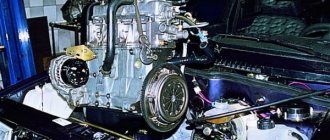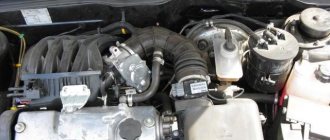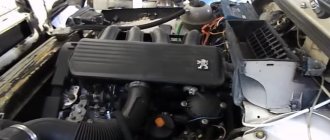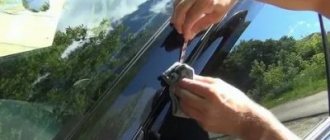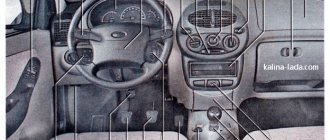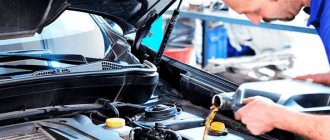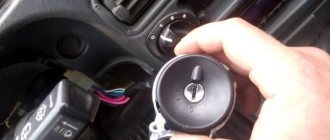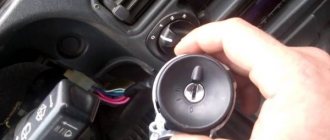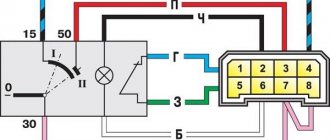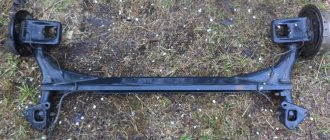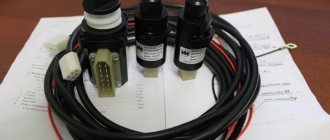3.6 out of 5 (92)
The VAZ 2114 repair manual is a digitized copy of the paper manual. The electronic version, downloaded to a tablet or phone, will always be at hand during vehicle maintenance and repair. You can download the VAZ 2114 repair book for free in rar format directly from the website.
Before using the car manual, check the year of manufacture and engine of the car.
Russian language
Format: rar
Size: 135.2 Mb
File downloaded 503 times
VAZ 2114 repair book for free in rar format
Features of the eight-valve VAZ-2114 engine
The eight-valve engine installed on the VAZ-2114 is easy to operate and maintain, and, taking into account the speed limit on highways of no higher than 90 km/h, it is practically not inferior to sixteen valve engines.
Unlike sixteen valve engines, the valves on 2111, 21114 and 11183, when the belt breaks, do not meet the piston and do not create problems for the owner associated with repairs. Moreover, if such a malfunction occurs on the road, it can be easily eliminated. To do this, it is enough to have a spare belt and the necessary tools: a head for “19”, open-end wrenches for “8”, “10”, “13”, “17”, as well as a special key for adjusting the belt tension by the position of the roller.
Thermal valve clearances must be adjusted every 30 thousand km, observing the temperature regime during adjustment, which should be within 20-30 degrees.
Regulation is made by replacing calibrated spots, the size of which alternates every 0, 02 and 0.03 mm. The exhaust valve clearance should be at least 0.35 mm, and the intake valves should be 0.20 mm. The accuracy of the set gaps affects the injection phase. When setting the clearances above the permissible ones, the camshaft cams open and close the valves with some delay in time, and if they are too small, they advance their response time. Too small gaps or their absence disrupt the tight fit of the valve disc to the seat and most of the time it operates in a half-open state, as a result of which the high-temperature flame bends around the edges of the disc, causing them to burn out. Valve guides are also subject to temperature effects, causing their maximum permissible runout (0.03 mm).
Causes of breakdowns. Repair
The body of the Lada Samara 2114 has a faceted shape and this helps it differ from other VAZ models. But this body shape of the Lada 2114 is the main cause of corrosion on car parts, the A-pillars. The most common problem is the problem of fan contamination, given the body shape. Subsequently, this can lead to breakdown of the fan motor itself.
The body, both front and rear, is equipped with plastic bumpers with aluminum beams. It also has removable front fenders. Damage to the Lada body is varied. It is for this reason that the repair rules for each case of breakdown must be individual. Car enthusiasts need to remember that, if possible, thermal effects on metal should be avoided.
Thermal effects have a detrimental effect on factory welding and anti-corrosion protection of the body, which was mentioned above. As for the body panels, in particular the front ones, they need to be removed only in extreme cases. This is necessary to locate the location of damage to the body and to straighten or align it. In cases where the damage to the body is more significant, all internal and upholstery parts of the body should be removed. This will make it easier for you to measure, control and install hydraulic and screw jacks to repair body damage.
There are many advantages of the body of this model. This includes the relatively low cost of spare parts, the fact that there is less shaking on the road, and ease of repair. In case of any body damage, you can easily cope with the repair of your car without resorting to the services of a car repair shop.
Pros and cons of the VAZ-2114
The period of the early 2000s was marked by the appearance of the VAZ-2114 on the market and during this period, approximately until 2006, it was considered prestigious to buy this car not only in Russia, but also in foreign countries. After six years and a massive influx of imported cars into the trade, the car that had taken the first step in the development of the domestic automobile industry began to be casually called a “scraper,” or even more roughly, a “pelvis.” The good news is that the percentage of such people is very small and the “hard worker” car continues to work to this day and helps out all segments of the population.
A huge plus about this car is that it can withstand all aggressive attacks both from its operation on poor-quality road surfaces and from natural conditions.
As with any machine, even a very expensive one, minor repairs are inevitable and maintenance is also necessary, but the price of these costs is offset by the honest return of all its energy. The VAZ-2114 car is reliable and there is nothing in its components that can break down critically; it can be repaired both in the city and in the wilderness, being far from super car services.
The machine is not complicated in design and is as simple and reliable as a coal-fired iron.
The last car, 2114, came off the assembly line, painted white, and the plant assemblers saw it off with tears in their eyes. It's sad, but it's a fact!
Chassis design features
The VAZ-2114 car is front-wheel drive. The power unit and gearbox are located in the engine compartment. Clutch drive is cable, mechanical. The gears in the box are controlled by a handle located in the cabin through a rocker mechanism.
Front suspension type: independent, telescopic. The front suspension struts are the main supporting elements in which the rotating elements are assembled. The strut assembly includes a spring that rests on the upper and lower support cups. The upper part of the rack is attached to the body with three bolts, and the lower part is attached to a brace, attached to the body spar by two brackets.
At the bottom of the strut, the bracket connects to the hub steering knuckle.
The wheel is turned by a steering rod connected to the steering rack. The rod turns the strut assembly, while at the top it turns on a support bearing, and at the bottom - on a ball joint. The anti-roll bar links the suspension on both sides and ensures its synchronous operation.
